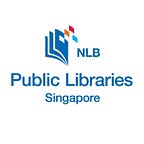A Modern Take on Chinese Calligraphy with library@orchard’s Resident, Elaine Chan
Meet library@orchard’s latest resident Elaine Chan, a self-taught Chinese calligraphy artist, whose residency at the library is from 1st March to 30th May 2023. Elaine’s passion in the visual arts gave her the inspiration to start Inklings, a website showcasing her creative efforts to combine traditional Chinese calligraphy with modern techniques and style. The result is a unique brand of calligraphy that expresses a spirit of strength, freedom, and elegance.
In the final month of her residency, we delve into her philosophy of incorporating a modern take in Chinese calligraphy and find out how she goes about bringing these concepts into fruition.
Hi Elaine! Tell us a bit about yourself and how you got started with Chinese calligraphy!
Being in a Chinese school during my formative years, there were high expectations on learning the Chinese language and its heritage. Chinese calligraphy was an essential part of that learning process, and it helped me become better acquainted with the language.
What kind of materials do you need to get started in Chinese calligraphy?
Traditionally, it would have been a brush, rice paper, ink and ink stone, which are dubbed the Four Treasures (文房四宝). They are reduced to three items now, which is the brush, ink, and rice paper.
We often think that Chinese calligraphy is meant for people who understand Chinese characters. What do you think are some common misconceptions about Chinese calligraphy and how do you hope to change these misconceptions with your craft?
Even though Chinese calligraphy consists of Chinese characters, the focus is on the beautiful writing which is an aesthetic piece of art. Each stroke resembles a dance movement that expresses the writer’s intentions, emotions, and thoughts in visual form. Visually too, the strokes create a form of spatial tension which is why some interior designers and architects take inspiration from Chinese calligraphy when working on their projects. If you were to dig deeper, you’ll find Chinese calligraphy can teach us history, politics, mental resilience and character building.
Do you have a favourite piece of calligraphy you did that you really enjoyed?
I don’t have a specific piece of calligraphy I enjoy, but I’m very much influenced by the Chinese contemporary artist, Wu Guan Zhong. He’s trained in both the Western medium and Chinese art and calligraphy, and his eclectic mix of techniques inspired me to incorporate such methods into my craft.
Your space looks very nicely decorated! Did you have a specific idea of how you’d like to dress up your space? How did you go about with it?
Thank you! Yes, I wanted the space to resemble a Chinese study room so whoever steps into the space will be transported into a scholarly atmosphere (hopefully!). I’m grateful to have the help of Temasek Polytechnic’s design school who made the concepts I shared into reality!
Since your residency setup is inspired by a Chinese study room, do you usually get your inspiration from books or elsewhere?
A large part of my inspiration comes from books, especially during the pandemic when travel wasn’t possible. Being a very visually-driven person, I get inspiration from cross-disciplinary art forms as well. Since travel has resumed, sights and sounds from my travels play a huge part in my ideation process.
Any advice for people who want to get started on Chinese calligraphy?
Just get a brush, ink and rice paper, and try it out! Don’t be afraid to make mistakes or be ashamed of your own writing. Learn to enjoy the sensory process of connection between the brush, ink and paper. Ponder each stroke and remember to breathe!
What’s next for you after this residency?
I’m looking forward to the exhibition showcase phase of my residency. It will be the very first exhibition of my works so far. I’m also excited to see what other collaborative doors could open from this residency.
Catch Elaine’s final open studio session on 27 May and look out for her post-residency exhibition at the Trend Gallery from 1 June to 29 June!
Also, you can see Elaine and Natalia Tan (the previous artist-in-residence) discuss their artforms and interacting with the library community in the video below:
For regular updates on library@orchard’s curated design programmes, subscribe to library@orchard’s Eventbrite collection or join the LearnX Arts Facebook group!
